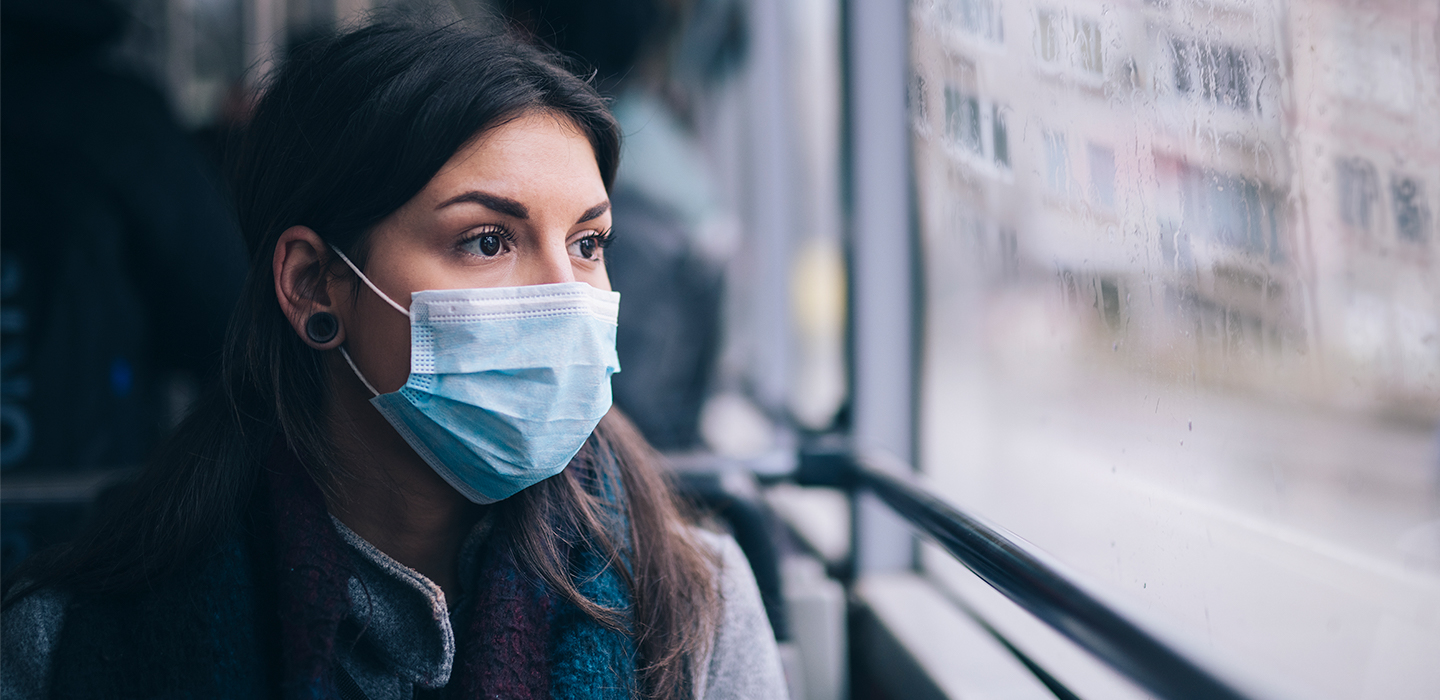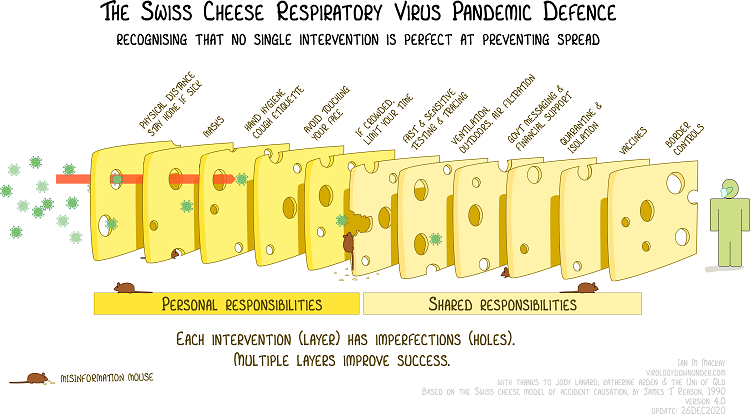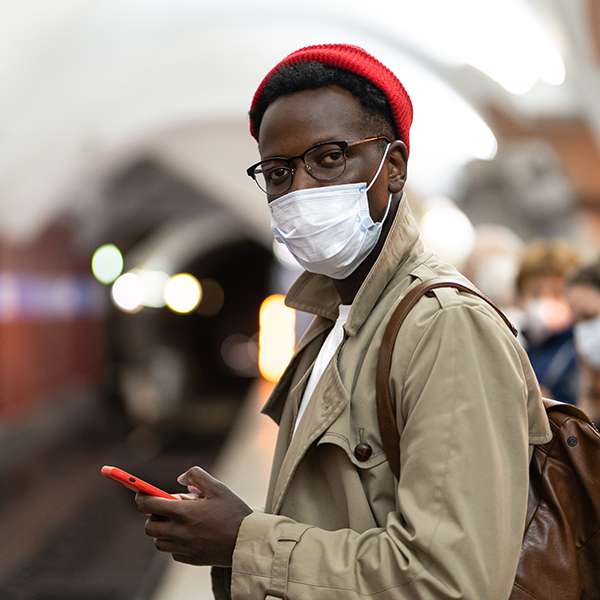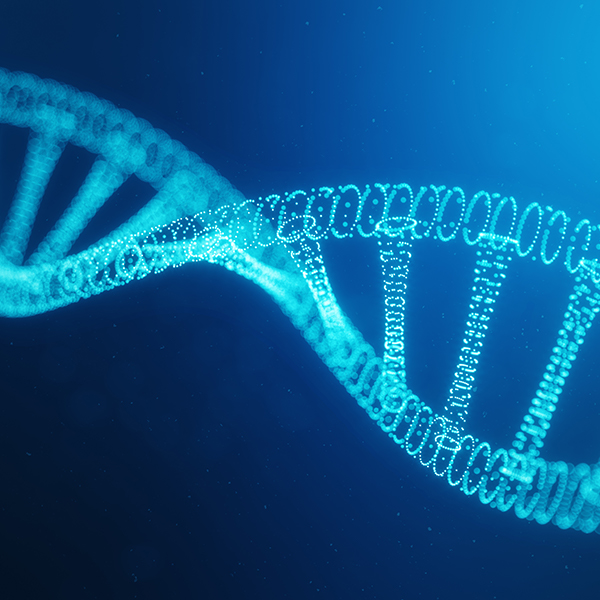What's Swiss cheese got to do with wearing masks, COVID-19 vaccines and all we do to overcome COVID-19?

Imagine layers of protection against COVID-19 as slices of Swiss cheese stacked one after the other. In recent months, experts have made reference to the "Swiss cheese metaphor" to explain how every preventive action has flaws, but together they create a powerful barrier against the spread of COVID-19 infection.
A couple of months ago, Australian virologist Professor Ian Mackay tweeted about the "Swiss cheese model" as a multi-layered approach for combatting COVID-19.
His tweet went viral (no pun intended).
This layered approach to reducing risk related to human error in relation to accidents was originally proposed by Professor James T Reason in the 1990s. Ian Mackay has adapted it to become relevant to the way in which we stack up COVID-19 preventive measures to maximise our protection against infection.
And, also to show how no preventive measure - from mask wearing to hand washing and even to receiving a COVID-19 vaccine - is perfect at protecting us from being infected with COVID-19, or passing it on to others, on its own.
That's why we practice multiple preventive behaviours at the same time. And, it's also why having a COVID-19 vaccine does not mean an end to the preventive measures we have practiced for months, to limit the spread of COVID-19 and protect ourselves from exposure to the disease.
Let's understand the "Swiss cheese respiratory virus pandemic defence" model
Here's the image Mackay used with his tweet:

Source: Ian M. Mackay (virologydownunder.com) and James T Reason. Illustration: Rose Wong.
What does this mean for us day-to-day?
The so-called "Swiss cheese respiratory virus pandemic defence" recognises that no single intervention is perfect at preventing the spread of COVID-19. It's important that we take our personal and shared responsibilities for preventing the spread of infection seriously.
Why are there holes in our actions. When we wear masks, for example, we make holes in this protective behaviour choosing a mask that is too thin, not wearing our mask correctly, touch it with unclean hands, sharing masks, and so on.
The model groups these as follows:
Personal responsibilities:
- Wearing masks
- Staying at home when sick
- Practicing physical distancing
- Washing our hands frequently for at least 20 seconds with soap and water
- Practicing cough and sneeze etiquette - cough or sneeze into a flexed elbow or tissue (and discard it immediately)
- Avoiding touching our faces
- Avoiding crowds of people
Shared responsibilities:
- Should we develop symptoms of COVID-19 ensuring that we access healthcare responsibly to confirm our diagnosis and assisting healthcare professionals to carry out effective contact tracing
- Ensuring we quarantine for 10 days when exposed to someone who has COVID-19 and self-isolate for 10 days when we contract COVID-19.
- Ensuring there is ventilation when we meet with others and meeting with others outdoors where ever possible.
- Taking government communication about the pandemic to heart and supporting national COVID-19 efforts
- Being vaccinated against COVID-19
- Effective monitoring of COVID-19 at country borders.
All in all, this model serves as a great reminder that the many preventive behaviours that we put in place every day - all the behaviours and strategies listed above - have their imperfections on an individual basis - and are not perfect alone. However, collectively they are very effective in giving us greater protection against infection with COVID-19.
Along the same lines, COVID-19 vaccines are not the ultimate solution to ending the COVID-19 pandemic. They are a very important part of the solution - another layer in the Swiss cheese of protective barriers available to us.
All medical information found on this website including content, graphics and images, is for education and information objectives only. Discovery publishes content to help to promote a better understand of COVID-19 and COVID-19 vaccinations. The content covered is an overview of key concepts and is not exhaustive in nature. We encourage further reading from other credible sources where necessary.
South African organisations:
- National Department of Health's dedicated COVID-19 portal: https://sacoronavirus.co.za/
- National Institute for Communicable Diseases' (part of the National Health Laboratory Service) dedicated COVID-19 hub
- South African Health Products Regulatory Authority (SAPRHA - part of the National Department of Health).
- South African Medical Research Council (SAMRC)
- South African Medical Journal (SAMJ)
International Organisations:
- Johns Hopkins University
- Harvard Health, Harvard University COVID-19 resource center
- Mayo Clinic COVID-19 resource center
- New England Journal of Medicine (NEMJ)
- US Centers for Disease Control and Prevention (US CDC)
- US Food and Drug Administration (US FDA)
- World Health Organization (WHO)


